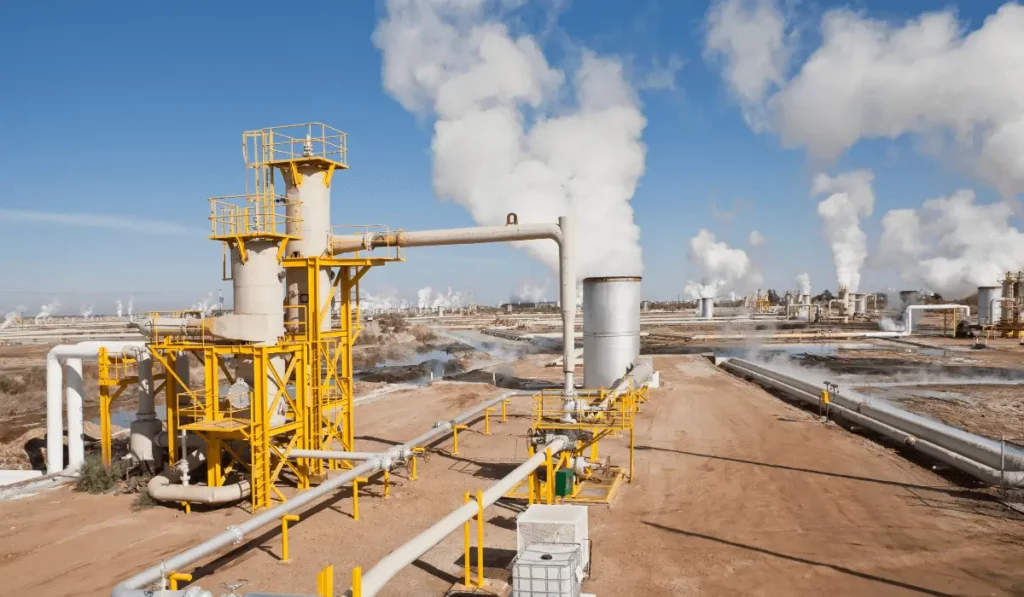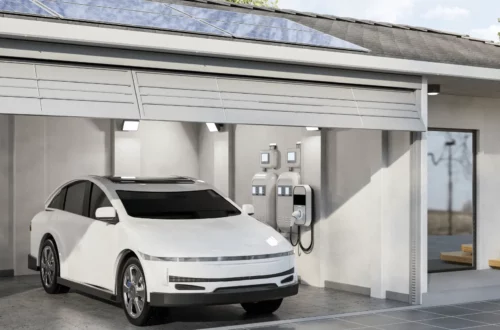Disadvantages of Geothermal Energy: A Comprehensive Guide

Are you interested in exploring alternative energy sources? Perhaps you’ve heard about geothermal energy and its potential environmental benefits. While geothermal energy does offer advantages, it’s important to be aware of its disadvantages as well. In this comprehensive guide, we dive into the topic of geothermal energy and shed light on its limitations.
So, keep reading to uncover the lesser-known side of this renewable energy source and gain a deeper understanding of its limitations.
Geothermal Heat Pumps: Exploring the Disadvantages
Geothermal heat pumps, also known as ground-source heat pumps, are a popular and energy-efficient technology used for heating and cooling buildings. While they offer many advantages, it’s important to consider some of the disadvantages associated with these systems. Let’s dive deeper into the potential setbacks of geothermal heat pumps:
1. High Initial Cost:
Geothermal heat pump installations involve higher upfront costs compared to conventional heating and cooling systems. The installation process requires drilling boreholes or trenches to access the geothermal reservoir beneath the Earth’s surface. This additional groundwork can significantly increase the overall cost, making geothermal heat pumps a less budget-friendly option for some homeowners and businesses.
2. Limited Accessibility:
Not all locations are suitable for geothermal heat pump installations. It is crucial to assess the geothermal resource availability in a particular area before considering this system. Areas with limited access to ground or water sources may not be conducive to installing geothermal heat pumps. Consequently, individuals residing in such regions may not be able to benefit from this renewable energy source.
3. Complexity and Need for Expertise:
Geothermal heat pump installations require specialized knowledge and expertise. The complexity of the system’s design and installation often necessitates the involvement of experienced professionals. Homeowners and businesses considering geothermal heat pumps must engage certified geothermal installers to ensure the system is correctly sized, designed, and installed. This requirement adds an additional layer of complexity and can deter some individuals from pursuing geothermal technology.
4. Potential Performance Variations:
The performance of geothermal heat pumps can vary depending on factors such as soil composition, groundwater availability, and the heating and cooling loads of the building. In certain cases, the geothermal system may not be able to provide sufficient heating or cooling capacity, especially in extreme weather conditions. This variability in performance can be a drawback and may require additional backup systems or alternative heating and cooling methods.
5. Environmental Considerations:
Although geothermal heat pumps are considered eco-friendly due to their use of renewable energy, there are certain environmental considerations to keep in mind. The drilling process involved in installing the system can have localized environmental impacts, including noise, disturbance to the landscape, and potential issues with groundwater contamination. It’s crucial to follow best practices and comply with environmental regulations during geothermal installations.
Also read: Top Renewable Energy Sources for a Better Future
The Challenges of Tapping Geothermal Reservoirs
Geothermal energy, as a renewable energy source, offers significant benefits for sustainable electricity generation and reducing greenhouse gas emissions. However, there are unique challenges associated with tapping geothermal reservoirs. Let’s explore some of these setbacks:
1. Limited Geothermal Resources: Unlike other forms of renewable energy such as solar or wind, geothermal resources are not universally accessible. To harness geothermal energy effectively, we need to locate areas with active geothermal reservoirs. These reservoirs are typically found in regions where tectonic activity and volcanic systems are prevalent. This limitation can restrict the widespread adoption of geothermal energy globally.
2. High Development Costs: The initial costs of developing a geothermal power plant or installing a geothermal heating system can be significant. Drilling deep into the Earth’s surface to access the geothermal reservoir requires specialized equipment and expertise, which can be expensive. Additionally, the exploration and site assessment processes can be time-consuming and add to the overall development costs.
3. Technical Complexity: Tapping into geothermal reservoirs involves complex engineering processes. The heat from the reservoir is transferred to a heat exchanger, where it is used to generate electricity or heat buildings. This process requires skilled technicians and careful design to ensure efficiency and safety. Maintaining and operating geothermal power plants or heating systems also require specific technical knowledge and regular maintenance to maximize performance.
4. Limited Scope of Direct Use Applications: Although geothermal energy can be used directly for heating purposes, such as in hot water or space heating systems, the applications are relatively limited compared to other energy sources. Direct use applications primarily benefit areas with hot springs or high-temperature geothermal resources. Expanding the scope and accessibility of direct use applications remains a challenge.
5. Environmental Impact and Risks: While geothermal energy is generally considered environmentally friendly, there can be localized environmental impacts and associated risks. Drilling activities can potentially cause mild seismic activity, although rare. Moreover, geothermal plants require the disposal of geothermal fluids, which can contain minerals or chemicals that need careful management to prevent contamination of groundwater or surface water bodies.
Environmental Concerns Associated with Geothermal Energy
Geothermal energy is widely recognized as a sustainable and renewable energy source, but like any other form of power generation, it does come with its share of environmental concerns. While the overall impact is relatively minimal compared to fossil fuels, it’s essential to understand these drawbacks to have a well-rounded view of geothermal energy.
1. Land Use: Geothermal power plants require a significant amount of land to harness the earth’s heat and convert it into electricity. Large-scale geothermal projects may involve drilling deep into the ground and building infrastructure, potentially disrupting natural habitats and landscapes. Careful planning and consideration are necessary to minimize the impact on wildlife and ecosystems.
2. Water Usage: Geothermal power plants utilize water to extract heat from the earth and generate electricity. In some cases, this can lead to the depletion of local water sources or interfere with existing water ecosystems. Proper water management strategies need to be in place to ensure sustainable usage and minimize any adverse effects on aquatic life.
3. Induced Seismicity: The extraction of geothermal energy involves injecting fluids into the earth’s crust, which can trigger seismic activities in certain geological areas. While most induced seismic events associated with geothermal energy are minor and not felt by humans, it is crucial to monitor and manage these activities carefully to avoid any potential risks or damage.
4. Gas Emissions: Although geothermal energy produces fewer greenhouse gas emissions compared to fossil fuels, some minor emissions of non-condensable gases can occur during the extraction and utilization processes. These gases, such as carbon dioxide and hydrogen sulfide, need to be properly managed to prevent any negative effects on air quality and human health.
5. Thermal Pollution: Geothermal power plants may release hot water or steam back into the environment after energy extraction. This thermal discharge can potentially raise local water temperatures, affecting aquatic organisms and ecosystems. Implementing cooling techniques and strategic thermal discharge management can help mitigate this potential issue.
Geothermal Energy and its Impact on Water Resources
Geothermal energy harnesses the heat from the Earth’s core to generate electricity or heat buildings. While it is a renewable energy source with numerous benefits, it also has certain drawbacks that need to be considered. One significant aspect to evaluate is its impact on water resources, which we will explore in this section.
1. Water Resource Utilization:
Geothermal power plants utilize large amounts of water for the extraction and conversion of heat energy. These plants typically require access to significant water sources such as lakes, rivers, or underground water reservoirs. This consumption of water can potentially strain local water supplies, especially in areas already experiencing water scarcity or drought conditions.
2. Potential Water Contamination:
The drilling and extraction processes in geothermal energy production can introduce chemicals and pollutants into nearby water sources. While rigorous measures are in place to minimize environmental impact, accidents or improper management could lead to the contamination of ground or surface water. This contamination can have adverse effects on both aquatic ecosystems and the availability of safe drinking water for local communities.
3. Subsurface Water Depletion:
Extracting large amounts of hot water from geothermal reservoirs can result in subsurface water depletion over time. This can lead to a decrease in underground water levels, impacting nearby wells, natural hot springs, and other geothermal resources that rely on subsurface water. Proper monitoring and sustainable management practices are essential to prevent the depletion of these valuable resources.
Also read: How Renewable Energy is Transforming the Environment: 5 Major Benefits
Exploring the Economics of Geothermal Energy
When it comes to the economics of geothermal energy, there are several factors to consider. While geothermal energy offers many advantages, it also has its drawbacks from a financial perspective. Let’s dive into the economic considerations associated with geothermal energy.
1. Initial Installation Cost:
Installing a geothermal system, such as a geothermal heat pump or a geothermal power plant, requires a significant upfront investment. The cost of drilling into the earth’s surface, where the geothermal reservoirs are found, can be quite expensive. Additionally, the cost of purchasing and installing the necessary equipment adds to the overall initial investment.
2. Maintenance and Operational Expenses:
While geothermal systems are known for their durability and longevity compared to other heating and cooling systems, they still require regular maintenance to ensure optimal performance. This includes routine inspections, filter replacements, and occasional repairs. These maintenance costs, although not prohibitively high, should be factored into the overall financial analysis.
3. Site Suitability and Resource Assessment:
One of the challenges of geothermal energy is that it is location-dependent. Not all areas have accessible geothermal resources suitable for energy production. Conducting a thorough assessment of the site’s geothermal potential is imperative to determine if the investment will yield adequate returns. The availability and quality of the geothermal resource directly impact the economic viability of implementing geothermal energy systems.
4. Transmission and Distribution Costs:
Another consideration is the infrastructure required to transmit and distribute the electricity generated from geothermal power plants. Developing the necessary transmission lines and connecting to the existing electrical grid can add additional costs. The proximity of the geothermal power plant to urban areas and power demand centers also affects the overall economics.
5. Uncertainty in Resource Estimation:
Despite thorough resource assessments, there is always some level of uncertainty associated with the estimated geothermal resource. This uncertainty in resource estimation poses a risk when estimating the economic feasibility of a geothermal project. It’s crucial to account for this risk and assess it to determine the project’s financial viability.
Also read: Renewable Energy vs Fossil Fuels: Which One is Better?
Conclusion
While geothermal energy is a promising and eco-friendly source of electricity, it does come with a few drawbacks. Understanding these disadvantages will help us make informed decisions about incorporating geothermal energy into our energy mix. One of the main setbacks of geothermal energy is the limited availability of suitable sites for harnessing it. Geothermal power plants require specific geological conditions, such as the presence of hot rocks and underground water reservoirs. This means that not all regions can benefit from this renewable energy source. Additionally, the upfront costs of building a geothermal power plant can be substantial. The drilling and installation of the necessary infrastructure can be expensive, especially for smaller-scale projects. However, it’s important to note that once the plant is operational, the electricity generated from geothermal energy is reliable and consistent, with low operating costs compared to traditional fossil fuel power plants. This can result in long-term savings and a reduction in carbon emissions.





